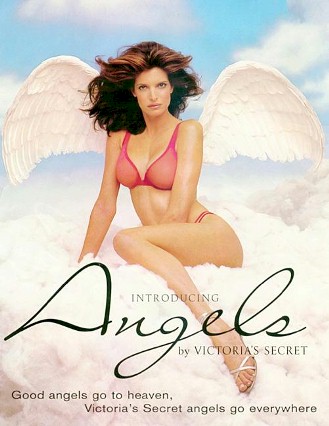I have an international last name, but I do not have long greasy hair that flows past my ears like Fabio. My abs are neither a six pack nor a washboard—more like cardboard covered in hair—but despite all of this, the International Male catalog stills manages to find me after five address changes in ten years.
As far back as 1993 when I was a college student living in the dorms, International Male wound up in my mailbox (in retrospect, it may have related to my GQ and Esquire subscriptions). Today, the catalog looks very similar to the way it did over ten years ago, although I have not been able to locate the fish-net, sleeveless shirts they used to sell, which I repeatedly laughed at. I did not archive my older issues because, yes, they were (and still are) hilarious, but for those of you interested in seeing what the catalogs used to look like consider this pitch that one eBay seller tauts for his 80s-90s International Male collection, “page after page of the hottest guys fashions, incredible looking models, excellent accessories and photography that is unequaled.”

Old International Male catalogs get sold on eBay.
Talk about exaggerating, but that’s what International Male offers the reader: exaggeration. The models’ physically exaggerated, broad shoulders and chiseled abs are enough to make anybody question what kind of workout regimen and diet goes into looking like a stripped down man of steel. And the clothing serves to exaggerate those parts of a male body that some guys feel insecure about (just consider International Male’s butt-lifting underwear). Few of the button-up shirts actually get buttoned up, and instead, reveal the male linea alba. On their website, International Male offers a description of what they want when searching for models to dress up in these outfits: “personality and attitude that comes across in the photos and makes our clothing look its very best.” Attitude? So that explains the Come Hither look that some of these men have. As the male version of the Victoria’s Secret catalog, International Male uses the model’s sensual gaze to lure customers into purchasing any one of their stylish items. Here are some great looking “personalities”:

Who needs buttons with these abs?

You talkin’ to me?

I’m a man in deep thought.

Did somebody say sassy?

With this shirt, you too could be the next American Idol.

Dude, you could be so money in this outfit too.
As a man, my first reaction when I look at International Male is, “I’ve got a long way to go in order to achieve this.” It’s a feeling plagued by insecurity until humor trumps those inadequacies, helping me come to the conclusion that this catalog appeals to single men, who are looking for a hot night on the town. Yes, that’s a presumption, but in any case, that’s not me. And no matter how hard I try and imagine who would look forward to this catalog or buy anything from it, Steve Martin and Dan Aykroyd’s Czech brothers keeps popping into my head along with Will Ferrell and Chris Kattan playing the Roxbury Guys, Steve and Doug Butabi. Initially, the laughs help me get past that feeling of inadequacy, and then I realize that clothing and abs do not make the man. False ideals like You too can be a stud in this shirt or these flesh-enhancing underpants are just that: ideals. First we see them in print, then on the television, and before long, we want a tummy tuck or face lift.
And that’s when the trouble starts. If the clothing isn’t enough (and it’s never enough) the next phase you may enter is physical transformation, a la the Swan. Instead of sexy clothing or shape-shifting surgery, what we really need is education that informs men, women, girls, and boys that the images assaulting them are neither ideal nor perfect. As a college student in the 90s, my BS detector sensed that International Male promoted over-sexualized clothing that was far from gentlemanly. Take the go softwear™ padded butt description for instance: “Get a fuller, rounder silhouette. Backside padding enhances your rear view.” Whether looking at the fishnet sleeveless shirt or the one-piece body suit, the images resonated as soft pornography. See for yourself.
I received ample eduction at a young age about body imagery thanks in large part to my mother, who got degrees in gender studies and communication theory. Grade school helped too: we had sex ed. as early as seventh grade, when our school nurse covered everything from how babies get made to why pornography is bad. Math, science, athletics, and art help children develop into well-rounded citizens, but shouldn’t they be armed with visual literacy? Catalogs that promote tightening undergarments or magazines like Men’s Fitness that champion sculpted abs and vein-ribbed biceps are aimed directly at young men, who should be prepared to encounter those images and maintain a positive self image. Buying the latest flesh-lifting product from International Male won’t make you comfortable with yourself, and it won’t guarantee you a date, but having a strong self-image does so much more by giving you confidence. That positive attitude should be enough to fight the war against your body, and a sense of humor doesn’t hurt either.







Was my earlier comment censored or was there a technical problem?
On Jun.12.2007 at 12:18 PM